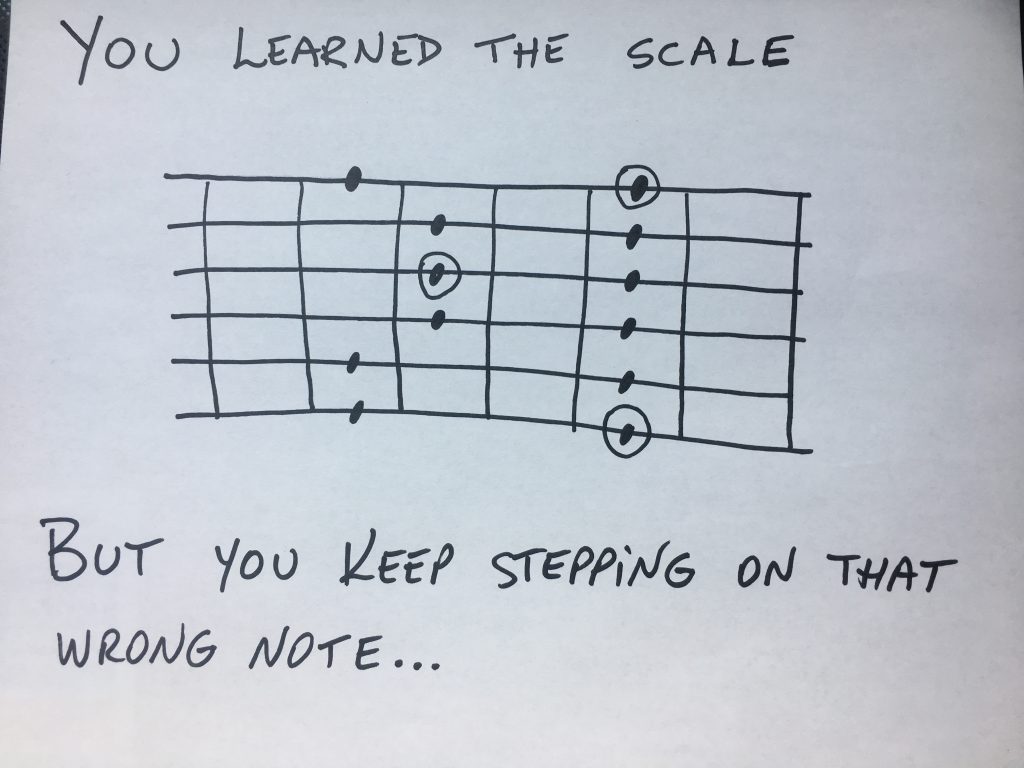That wrong note
July 31, 2019

After you learned the scale, most likely A minor Pentatonic in the 5th Position, you start jamming. Maybe you have a looper, or record yourself playing some chords or use some tracks from youtube or jam with a friend. Sometimes, when you’re soloing, everything is fine. Then there are the times when you’re stepping on that wrong note and can’t figure out why it sounds wrong now if it was perfectly fine on another occasion. So why? The reason “why” is the key to understanding one of the most important concepts for playing good lead solos. The “context”. Now, the context is conformed of several elements, like rhythm, style, instrumentation and the one we want to focus on right now: The chord progression. Remember: If you don’t know your cords, you can’t take any solos, how can you take any solos if you don’t know your chords?
Here’s are first example of how this happens:
You’re soloing with the A minor pentatonic over a A5 (power chord) and everything is working well. Then, you’re soloing over an A7 chord and there it is, that trouble note again!
What’s happening: The “C” on your third string, fifth fret is clashing with the “C#” note contained in the chord A7 (A C# E G)
Two things you can try to fix this
- Play A Major pentatonic (A B C# E F#). You haven’t learned that yet? No problem! A Major Pentatonic contains the same notes as F# minor pentatonic (F# A B C# E)
- Add/replace the “C” note with a (“C#) while playing over A7 You can do this by sliding/hammer on or bend from the “C” note up one half step or simply play “C#” instead of “C”
You can do this by sliding/hammer on or bend from the “C” note up one half step.
If you’d like to explore this further, book a lesson or visit my live online Q&A Jamplay sessions using the free code on my lesson page: http://marceloberestovoy.com/guitar-lessons/
Marcelo Berestovoy ©2019

